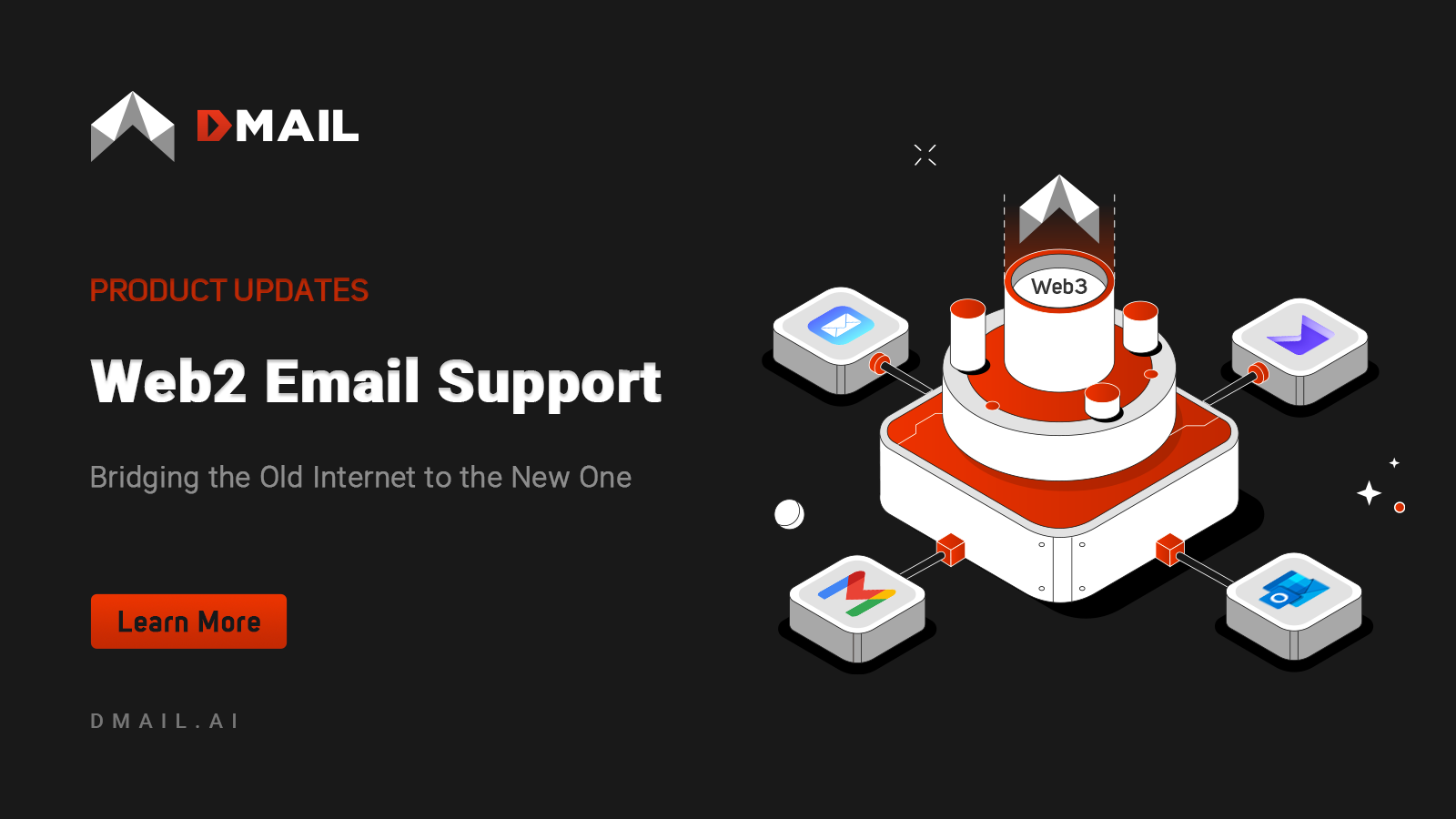Web2 Email Support: Bridging the Old Internet to the New One
Web2 Email Support isn’t a compromise — it’s a catalyst. It’s how Dmail makes decentralization practical instead of ideological. By bridging the two ecosystems, we open the door for mass adoption and redefine what it means to “own” communication.

For all the noise about decentralization, the uncomfortable truth is this: Web3 can’t replace Web2 overnight. Billions of people, businesses, and workflows still live inside Gmail, Outlook, and other legacy systems. That’s why Dmail Network didn’t start by burning the bridge — we built one.
Web2 Email Support is Dmail’s on-ramp for the rest of the world. It connects decentralized identities to traditional email infrastructure, allowing users to send, receive, and archive messages seamlessly between blockchain-based accounts and legacy inboxes. No plugins. No middlemen. No new learning curve.
How It Works
Under the hood, Dmail’s Web2 Email Support acts as a two-way relay layer between conventional SMTP/IMAP systems and Web3’s encrypted messaging protocol.
- Inbound: When a Gmail or Outlook user sends mail to a Dmail address, our relay translates it into an encrypted Web3 message, stored on decentralized infrastructure and accessible through the Dmail dApp.
- Outbound: Dmail users can respond directly from their decentralized inbox. Replies are re-formatted into Web2-compatible messages and delivered to the recipient’s standard inbox in real time.
This hybrid system preserves the security and ownership advantages of Web3 — messages are stored, encrypted, and controlled by the user’s wallet — while maintaining full compatibility with the email networks people already use every day.
Why It is Significant
Most blockchain projects isolate users in closed ecosystems. Dmail does the opposite. Web2 Email Support removes friction from adoption by letting anyone communicate across both worlds from day one.
- Zero onboarding barrier: A Dmail user can message anyone with a standard email address — they don’t need to know what a wallet is.
- True interoperability: Businesses can phase in Web3 messaging without disrupting CRM systems or marketing automations built on Gmail, Outlook, or Zoho.
- Progressive decentralization: Institutions can start on familiar territory, then migrate data and operations to Dmail’s decentralized layer as confidence and literacy grow.
In short, this feature ensures Dmail doesn’t demand revolution before evolution. It accelerates real-world usability by respecting existing infrastructure.
Use Cases
- Corporate Migration: Companies running on Outlook can test Dmail without abandoning Exchange servers — every staff member’s Dmail wallet can still email partners on traditional domains.
- Web3 Projects: DAOs and crypto companies can maintain communication with mainstream users while keeping internal messaging fully on-chain.
- Individuals: Users can finally own their inbox without losing touch with friends, clients, or employers still stuck in Web2.
The Bigger Picture
Web2 Email Support isn’t a compromise — it’s a catalyst. It’s how Dmail makes decentralization practical instead of ideological. By bridging the two ecosystems, we open the door for mass adoption and redefine what it means to “own” communication.
Dmail isn’t asking users to abandon the past. We’re upgrading it.

Connect with Dmail: Website | Twitter | Discord | Github | Telegram


Comments ()